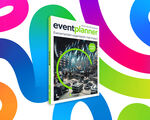Meeting potential clients is always an opportunity to rethink your value proposition. It can also cause moments of uncertainty, stress, and anxiety. That’s normal.
Naturally, you want to make a good impression on your new event clients and present your best self. However, we tend to focus more on our pitch and the services we can deliver than on actually building trust with our prospects.
We put in long hours of work polishing the PowerPoint presentations or the narrative we've built around our brand. Yet we spend almost no time finding ways that will help us build meaningful relationships with our event clients.
To succeed (meaning, land and keep the client), you must become a trustworthy ally.
See, people won’t engage your services just because you have a great product. They also need to feel secure and safe doing business with you. And here’s where building trust matters more than just presenting a nice portfolio or bragging about your accomplishments or work for other clients.
According to the entrepreneur and author Charles H. Green, there’s a four-factor model for trustworthiness: credibility plus reliability plus intimacy divided by self-orientation.
Credibility is whether a client will trust what you say or not. Reliability refers to whether he or she can depend on you. Intimacy is the feeling your clients get when you talk with them. They feel comfortable and safe sharing their thoughts, knowing that you won’t laugh at them.
Finally, the self-orientation factor involves the presence or the absence of a hidden agenda. Will your clients believe you have their best interests at heart, or yours?
To actually build a successful and proactive professional relationship, your event clients must feel that you have their backs, will pay attention to what they need, and will commit to helping them. If you can master all these factors, you won’t have to worry about not getting your next event deal.
Not sure how to achieve this? Here’s a list of steps you may want to follow during your next interaction with a potential or new event client:
Step 1. Learn who your clients are
One of the biggest mistakes you can make when having a first meeting with a prospect is not doing your homework. Not knowing who you’ll be meeting with, what this client (whether it’s an individual or a company) is doing, and what possible needs this client may have will decrease your chances to build trust.
You can’t walk into a meeting without doing some in-depth research. This includes carefully studying the prospect’s website and other online resources, reading the prospect’s blog posts (if any), and checking the prospect’s corporate social profiles.
Your main questions should involve your potential or new client’s area of expertise, who his or her (or its, if it’s a company) main target groups are, if he or she has run any events in the past, and the outreach level.
Based on this information, you can adjust your portfolio and services accordingly.
For example, if the potential client is a university (or university department), you would build your portfolio around the academic events you’ve planned in the past.
If it’s a corporation, you would structure your social proof based on the business events you’ve managed. This shows your commitment to your potential clients and willingness to understand their needs.
Step 2. Listen to your client and ask the right questions
How many times have you walked into a meeting fully prepared with a long pitch about why a prospect should choose you to plan his or her event?
Another factor that can damage trust between your brand and your prospects is your eagerness to talk, instead of listening.
While a powerful pitch is obviously important, first you must listen to what your potential client has to say, and then ask the right questions. Confirm the event details, ask what the prospect’s preferences are and how he or she plans to reach the audience, and his or her main objective.
Have prepared a document with preloaded questions, but also be ready to ask questions in-situ, depending on what your prospect has to say.
Step 3. Be agile in presenting your feedback
If the prospect asks you for a draft of the contract, an estimated quote, or a quick proposal, don’t wait days to prepare and send it. Be responsive and react quickly.
Don’t let too much time pass between the request and the delivery.
If you make your prospects wait too long, they might start looking elsewhere. The quicker you respond, the more trust they’ll have in your professionalism and commitment.
Step 4. Go the extra mile when designing the event project
If you successfully passed the first step with your prospects and they ask you to design an event project, don’t stop here. The worst thing you can do is sit back, relax, and think that there’s nothing that can break the deal between you and your clients.
Building trust is constant.
That’s why you should always go the extra mile and give clients more than expected. This doesn’t mean you have to double your efforts—sometimes, one small detail is enough. For example, if your new client has decided to handle promoting the event, you could easily make some recommendations based on your experience and why you think they’ll work.
Step 5. Be honest and upfront about your limitations
Sometimes, in an attempt to impress someone, we tend to take on more than we can handle. Be very careful with this. Not being able to deliver will weaken your clients’ faith in you.
Instead of saying “yes” to everything, be honest about your limitations. If a client tells you to do something you’ve never done before, admit that it’s out of your area of expertise.
Or, if you truly feel confident that you can successfully complete the task, be sure to mention it’ll be your first time doing it, but you’re ready to do your best.
Always be forthcoming about the things you can and can’t do. This will earn your clients’ respect and keep (and possibly enhance) their trust in you.
Final thoughts
Building trust is an ongoing, never-ending process, which means you must always have your best self on display. However, there are certain tricks that can help you.
Before meeting your prospects, do your homework and learn as much as you can about them. During the meeting, instead of talking all the time, listen carefully and ask the right questions. Deliver your work quickly (or explain any delays) and be responsive to your prospects'/clients' requests. Always go the extra mile and deliver more than was expected.
Finally, be truthful about what you can and can’t do. Apply these strategies consistently and you’ll build a strong trust between your brand and your (potential) clients. Good luck!








Send more details